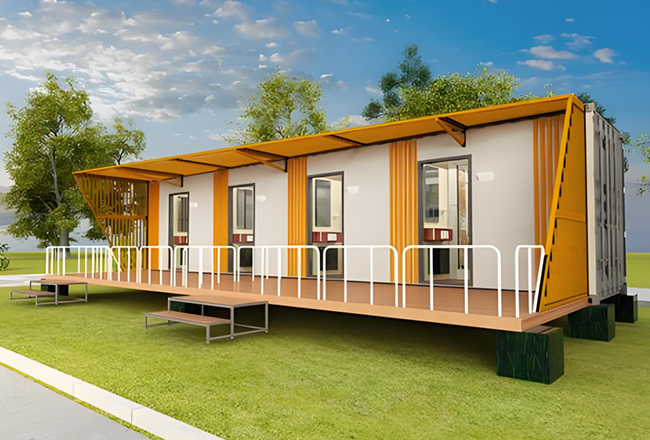Are container houses waterproof
Container House Waterproof Grade Standard
The waterproof grade of containers is classified according to ISO 1496 standard, and is divided into four grades: IP1, IP2, IP3 and IP4.
IP1: It only has rainproof function, not anti-immersion function, and the upper part of the box can seep water, which is suitable for boxes not transported by sea.
IP2: It has the ability to prevent rain, waves and waves from invading, and no water can penetrate the sides and top of the box, which is suitable for short-distance sea transportation and inland land transportation.
IP3: It has the ability to prevent rain, shallow water and deep water, and the box cannot have any leakage during sea transportation, which is suitable for sea transportation and long-distance land transportation.
IP4: It has the ability to prevent rain, deep water and water waves such as ship surge, which is suitable for long-distance sea transportation in harsh marine environments.
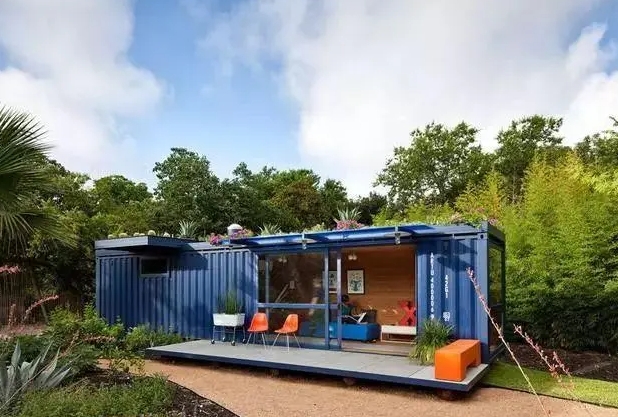
Container Waterproof Grade Testing Method
The waterproof grade test of containers needs to meet the requirements of international standard ISO 1496-2. Commonly used testing methods are pressure testing and spray testing. Pressure testing checks whether the container has leakage by inflating the container to generate air pressure. The spray test is to spray high-pressure water outside the container to check whether there is any leakage in the container.
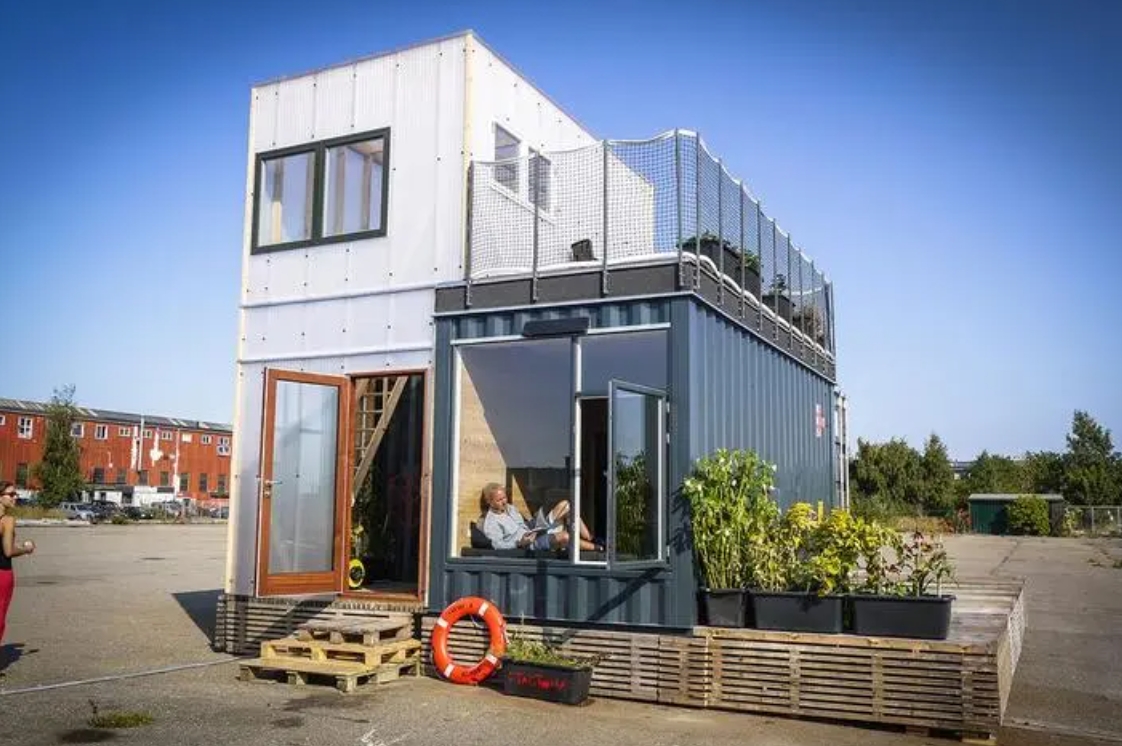
Steps for waterproofing container houses
The flexible waterproof layer can be laid with coating or roll material to achieve waterproof effect. During the construction process, the moisture content of the building foundation must be less than 9%, so it is suitable for construction in a high temperature and continuous sunny environment. After construction, a water storage test should be carried out.
For coating waterproofing, after the base layer is cleaned, a complete layer of paint should be applied. After the film is dried and formed, a layer of glass fiber cloth matrix reinforcement material should be laid, and a complete layer of paint should be applied on the flat surface to fix it. After drying, the next roof waterproofing construction is carried out.
After the base layer is cleaned, apply adhesive on the reverse side of the roll material and the base layer, paste and roll from far to near according to the benchmark line, and then check the joint closure.
The second layer of waterproof structure of the roof waterproof structure, that is, the rigid waterproof layer, should be constructed about two days after the flexible waterproof layer is laid. The base materials are mainly advanced fatty acid mortar waterproofing agent, cement, sand, fine stone aggregate, fiber, and the thickness of the waterproof layer should be 20-30mm.
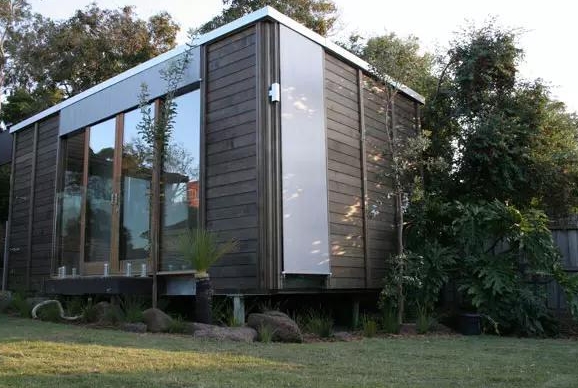
Waterproof measures for containers
Material selection: Containers are generally made of rust-proof steel plates, and their surfaces are treated with spray paint or oxide film, which can effectively resist external oxidation or corrosion.
Welding seal: When welding containers, local steel plates will be thickened and the sealing area will be increased to make the welds more solid, thereby preventing water leakage.
Sealant: For locations such as axle holes and lock holes, adhesive sealants will be used to effectively prevent rainwater from seeping in.
Precautions for waterproofing containers
Placing: When placing items in a container, be careful not to place the items close to the container wall or bottom to avoid being wetted by rain.
Placing height: During storage, avoid placing items close to the container. Store items at a higher position from the top of the container to avoid rain dripping along the wall of the container and causing moisture.
Sealing inspection: During use, the sealant and welds of the container should be checked regularly for leaks. If problems are found, they should be repaired in time.
In summary, containers can be rainproof. A variety of waterproof measures are adopted in the design, but attention should still be paid to details during use to ensure that the items inside the container are not damp.
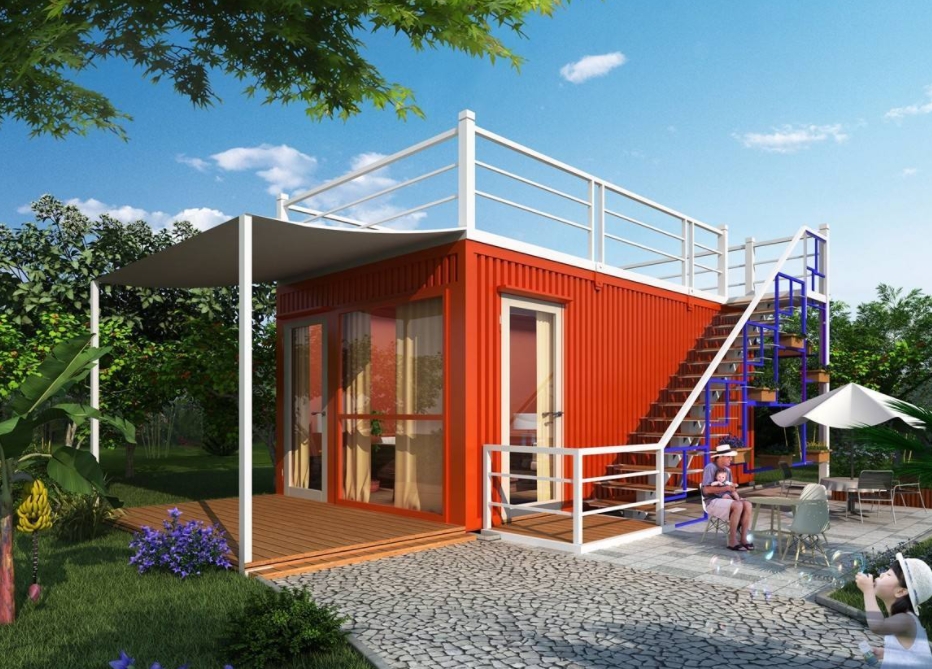
Tips for waterproofing containers
1. Waterproofing of doors and windows
The doors and windows of containers are the focus of water seepage, so waterproofing of doors and windows is a basic measure for waterproofing containers. Waterproof strips or waterproof glue should be used to seal the doors and windows, and sealing strips should be installed on the door seams to ensure that the doors and windows are well sealed with the box body. In addition, windproof doors and windows coated with rubber and other materials in windy and sandy areas can also effectively prevent water seepage.
2. Ground waterproofing
The waterproofing of the container floor requires the use of anti-penetration walls or ground waterproof coatings. After the waterproof layer is made on the ground, you can also use covering layers such as wooden floors, carpets or plastic floors to protect the waterproof layer.
3. Roof waterproofing
Roof waterproofing is one of the key steps in container waterproofing. When using coatings or waterproof rolls on the roof, pay attention to the fact that the roof is more prone to ultraviolet rays and temperature, and antioxidants need to be used as the material components. Insulation materials can also be installed on the roof of the container to effectively prevent water vapor from penetrating the roof.
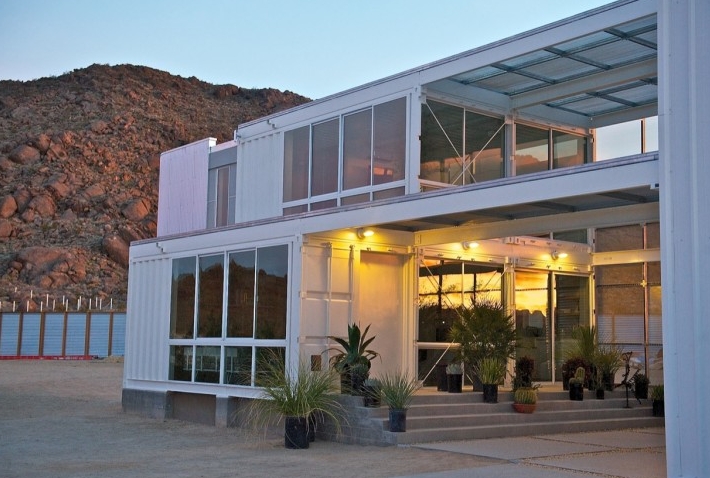
4. Pipeline waterproofing
Pipeline waterproofing can use closed waterproof casings to cover pipes and cables. It can also be covered with waterproof tapes, waterproof bandages and other materials to ensure effective pipeline waterproofing. At the same time, waterproof glue can be used to seal the pipe interface to prevent leakage.
5. Other waterproof measures
In addition to the above common waterproof measures, there are some other waterproof techniques. For example, handle the drainage system well to ensure that rainwater flows out of the container. Isolation materials can also be added between the container panels to play a role in waterproofing and heat insulation. In addition, after long-term use, the sealing of the container should be checked in time, and maintenance and repair work should be done well.


